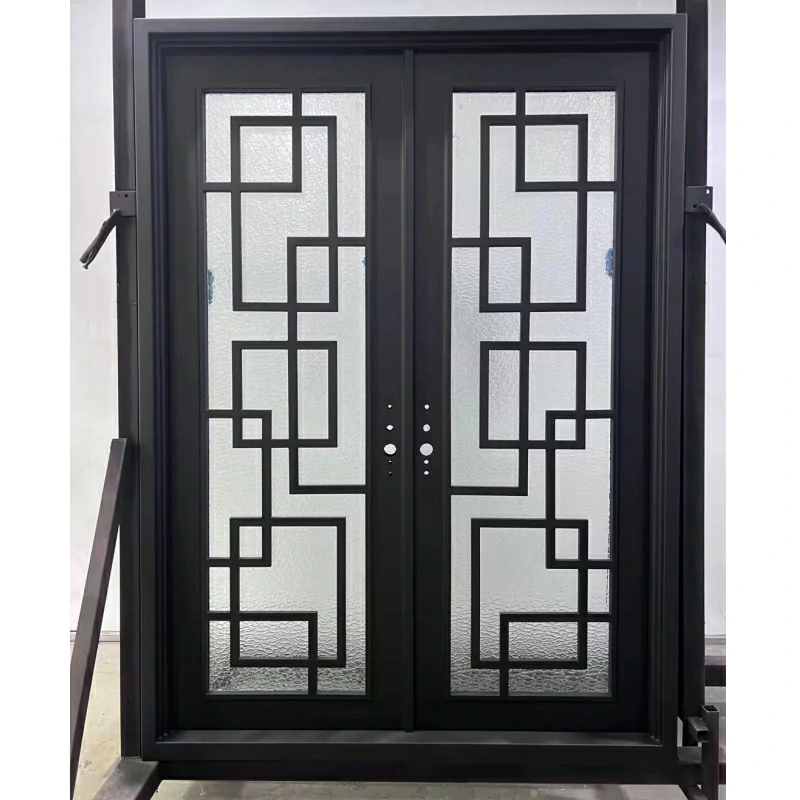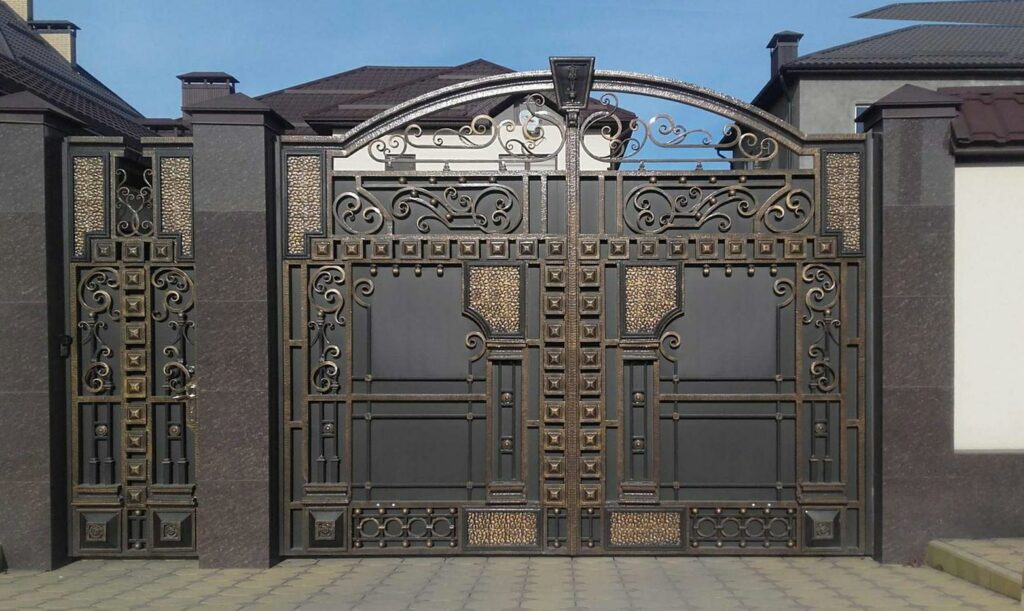The main difference between wrought iron doors and cast iron doors is their manufacturing process and material properties. Wrought iron doors are manufactured through a forging process in which metal at high temperatures is hammered and shaped to obtain the desired shape and structure, so wrought iron doors have increased strength and durability. The cast iron door is manufactured through a casting process. The molten iron is poured into the mold and cooled to form the desired shape and structure. The advantage of the cast iron door is that the manufacturing cost is low, but the strength and durability are not as good as the wrought iron door. Therefore, the choice of wrought iron doors or cast iron doors should be decided according to the use occasion and needs.

What is the difference between wrought iron and cast iron
- Cast iron iron art: the appearance is very rough, and the sound of knocking is boring.
- Wrought iron iron art: the appearance is very smooth, and the knocking makes a crisp sound.

Cast iron is cast, which is formed by smelting pig iron into a solution of iron and then casting it. Wrought iron is forged from solid iron at high temperature into other shapes of iron. Cast iron is easy to break, but wrought iron is not easy to break.
Wrought iron has hammer marks on the surface, but cast iron does not. Cast iron is pig iron and wrought iron is wrought iron. The sound of striking cast iron with metal is relatively crisp, and the sound of striking wrought iron is relatively loud.
It depends on your use for outdoor use. If it is an ornament, cast iron and wrought iron are similar. Cast iron is less expensive, but wrought iron is easier to weld. In appearance, if it is electroplated or painted, it will be similar.
Lump ironmaking is the iron containing more inclusions obtained by reducing iron ore in a solid state at a relatively low temperature (about 1000°C) with charcoal. This kind of iron is a spongy solid with many impurities, low carbon content, and soft quality. It can only be forged but not cast.
Ironware made by heating and forging, extruding inclusions, and improving mechanical properties are called block iron forgings. If in the process of repeated heating, the block iron is in contact with the charcoal fire, the carbon infiltrates and the carburization becomes hard, then it becomes block carburized steel.
Pig iron is an iron-carbon alloy with a carbon content greater than 2%. The carbon content of industrial pig iron is generally 2.11%-4.3%, and contains C, Si, Mn, S, P and other elements. It is smelted with iron ore in a blast furnace. product. According to the different forms of carbon in pig iron, it can be divided into steelmaking pig iron, foundry pig iron and nodular cast iron.
The performance of pig iron is hard, wear-resistant, and good castability, but pig iron is brittle and cannot be forged.
The main component of cast iron and wrought iron is iron. The main difference between the two is the carbon content. Cast iron generally contains 2-4.3% carbon, and wrought iron contains 0.03-2%. Wrought iron is to oxidize and remove excessive carbon and other harmful impurities (such as sulfur, phosphorus, etc.) contained in iron by oxidizing agents (such as oxygen) at high temperatures, so that they reach the specified range of steel content.
